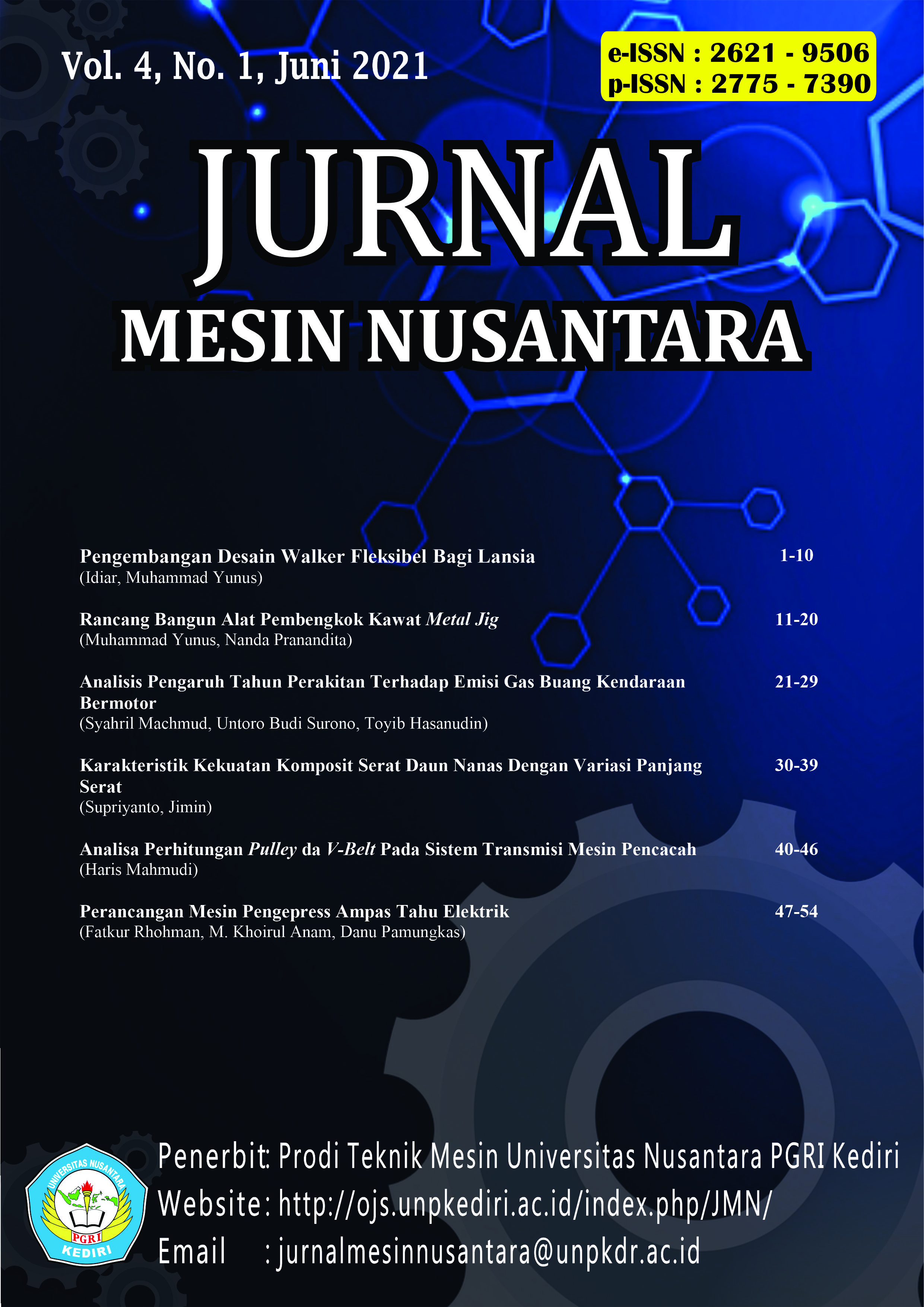Pengembangan Desain Walker Fleksibel Bagi Lansia
DOI:
https://doi.org/10.29407/jmn.v4i1.15965Keywords:
elderly, risk, design, walker, flexibleAbstract
The health condition of the elderly generally has decreased which can cause several physical and mental problems. Elderly aged over 70 years or 60 years who have health problems are categorized as high risk elderly. In carrying out their daily activities inside the house or outside the house, such as going to the mosque, garden, etc., they usually use a equipment called a walker. The types of walkers on the market still have limitations, so they need to be developed in a flexible walker design. The stages used in the flexible walker design development research are compiling a list of requirements, determining reference concepts, developing alternative concepts, selecting concepts, and analyzing techniques and postures for the selected design.
The selected concept has specifications, namely the front pedestal functions as a fixed leg or wheeled leg, the arm of the walker holder can be adjusted up and down by 150 mm in height, has a seat that can be folded, and the walker can be folded. In addition, the results of stress analysis on the critical component, namely the main fulcrum, obtained safe criteria where the maximum stress value that occurs is 7.35x106 N/m2 is given still below the yield strength value of the brass material 3.5x108 N/m2. Posture analysis using the RULA method in standing and sitting positions obtained an average final score of 2 in the acceptable category for walker users..
Downloads
References
D. Djumhariyanto, “Pengembangan Alat Bantu Jalan (Walker) Dengan Metode Quality Function Deployment (QFD),” J. Flywheel., vol. 7, no. 1, pp. 35–44, 2016.
L.T. Haryanto, “Perancangan Ulang Alat Bantu Jalan (Walker) Untuk Pasien Pasca Stroke Menggunakan Metode Value Engineering,” Universitas Sebelas Maret Surakarta, 2012.
Alfadhlani, Y. Meuthia, D. F. Valent, “Perbaikan Rancangan Kruk Ketiak Untuk Penderita Cedera Dan Cacat Kaki,” J. Optimasi Sistem Industri., vol. 12, no. 2, pp. 400–410, 2013.
I.M.L. Batan, Desain Produk, Jogjakarta: Andi Publisher, 2012.
Downloads
Published
Issue
Section
License
Authors who publish with this journal agree to the following terms:
- Copyright on any article is retained by the author(s).
- The author grants the journal, right of first publication with the work simultaneously licensed under a Creative Commons Attribution License that allows others to share the work with an acknowledgment of the work’s authorship and initial publication in this journal.
- Authors are able to enter into separate, additional contractual arrangements for the non-exclusive distribution of the journal’s published version of the work (e.g., post it to an institutional repository or publish it in a book), with an acknowledgment of its initial publication in this journal.
- Authors are permitted and encouraged to post their work online (e.g., in institutional repositories or on their website) prior to and during the submission process, as it can lead to productive exchanges, as well as earlier and greater citation of published work.
- The article and any associated published material is distributed under the Creative Commons Attribution-ShareAlike 4.0 International License












